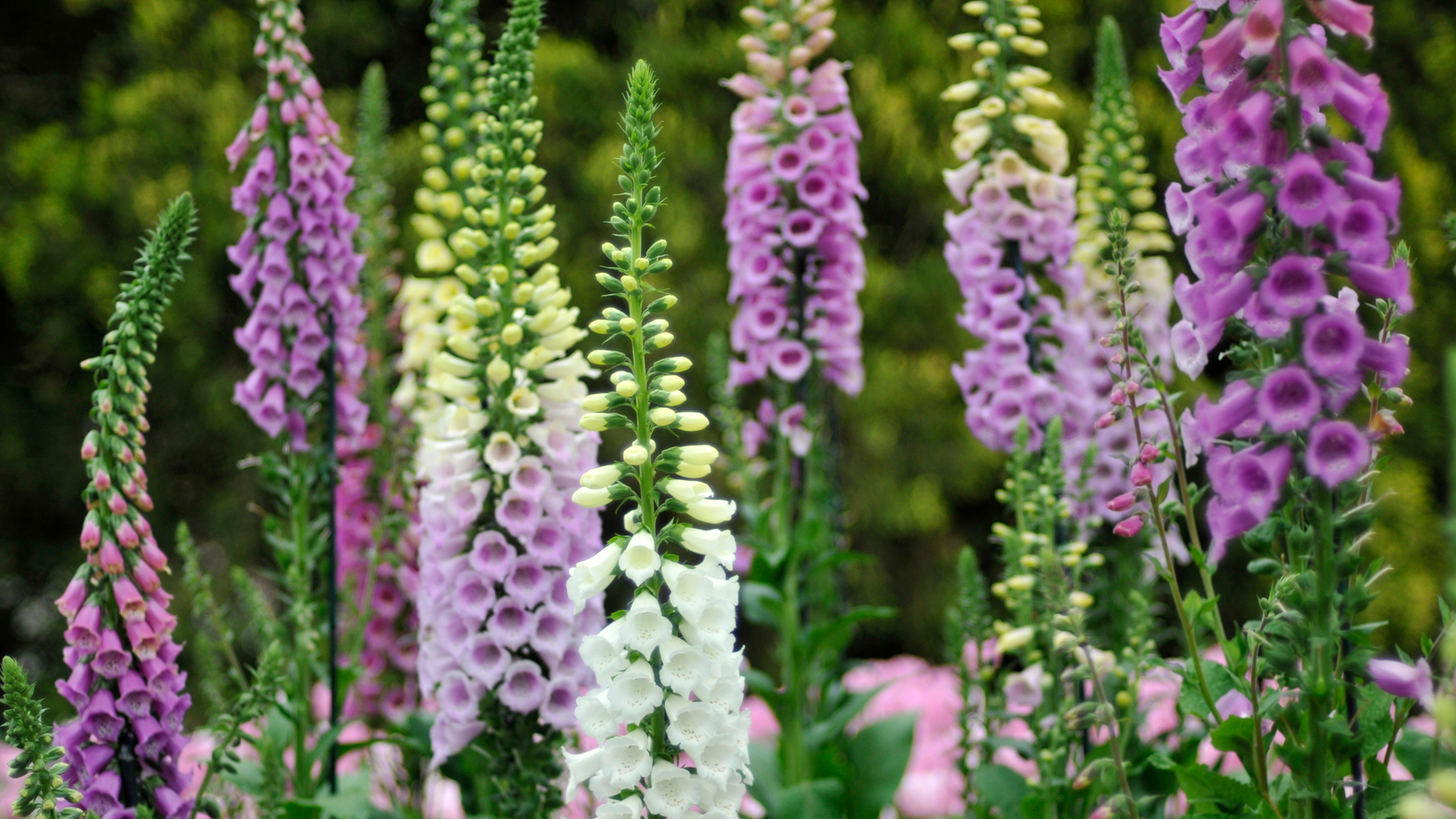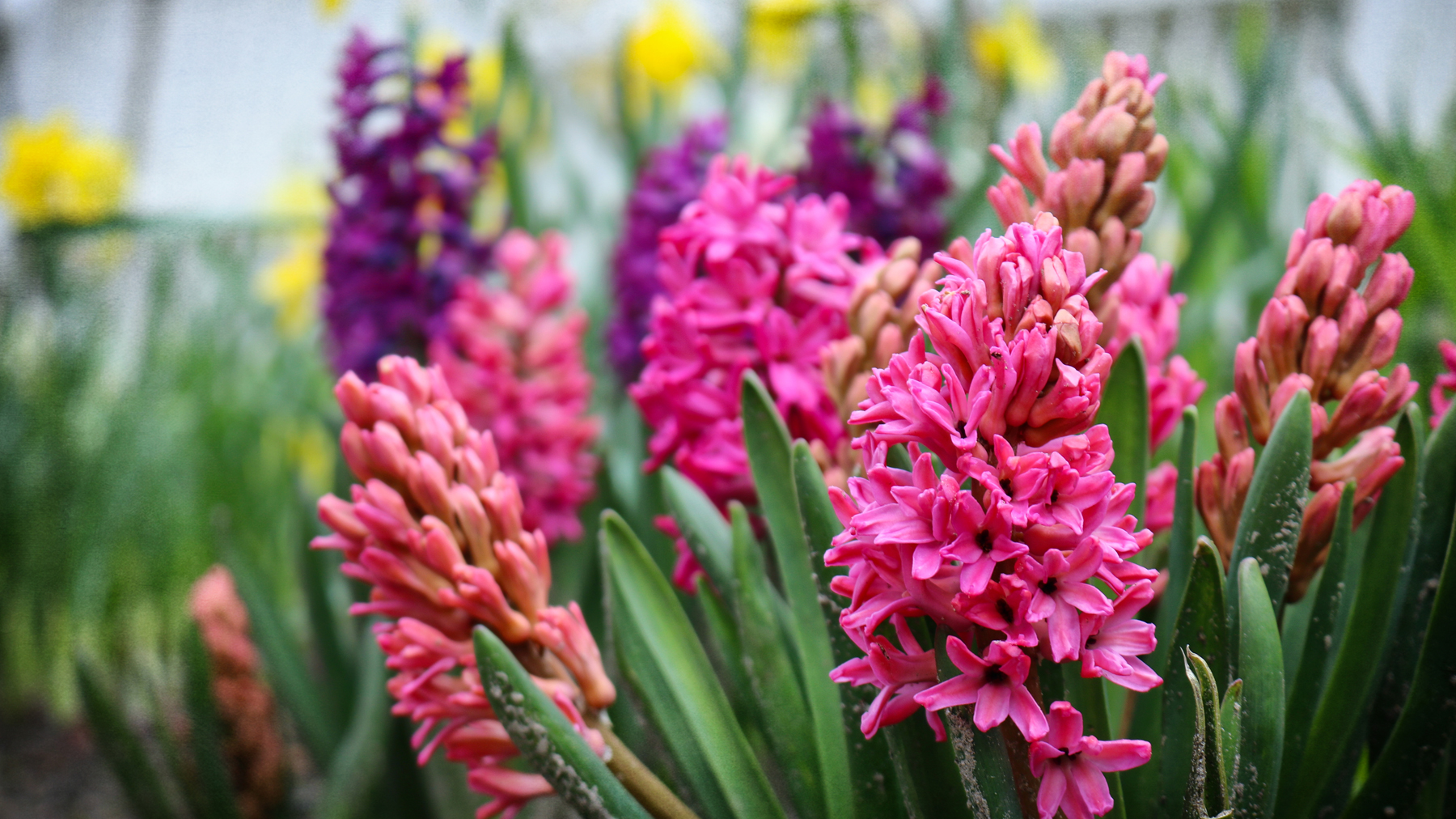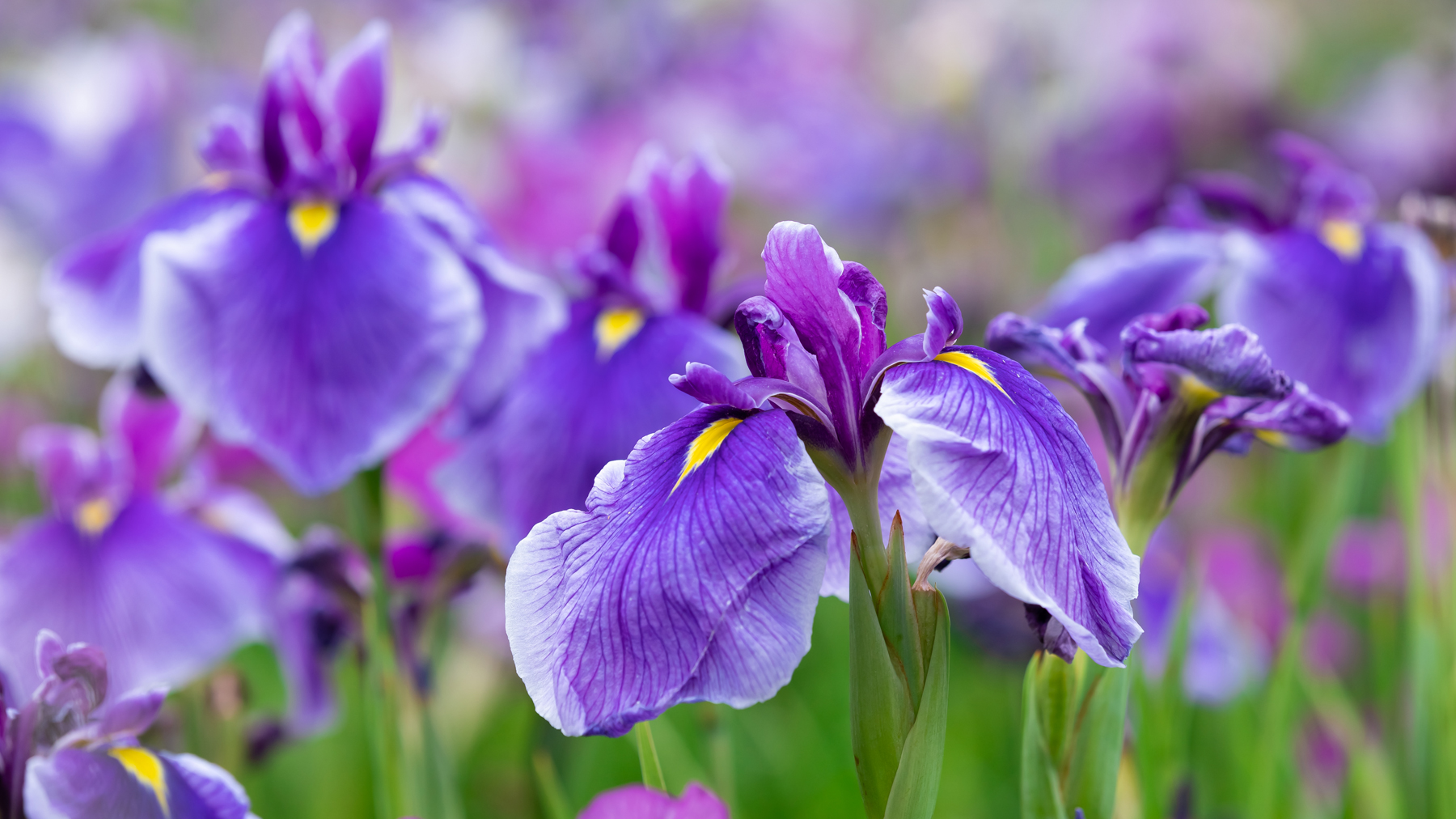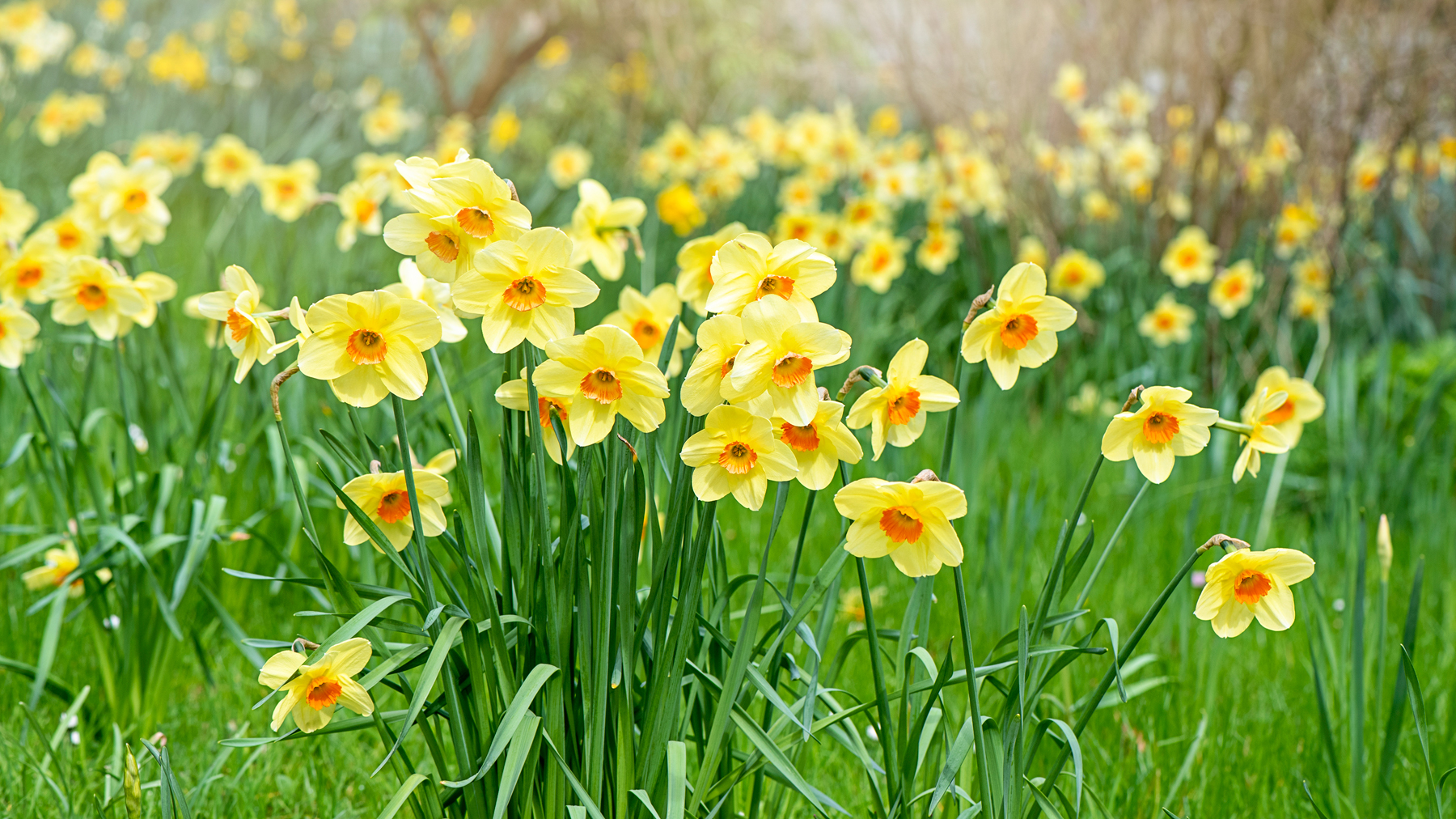12 Spring plants that are toxic to dogs
Whether you’re on walks or hanging out in your yard, keep your dogs safe this Spring with our guide to 12 toxic plants

As a dog guardian, it’s important to be aware of the various Spring plants that are toxic to dog. As Spring arrives, our walks may take on new routes or you might be spending more time in your backyard. Whatever the activity, when we’re spending time outdoors with our dogs we want to be able to keep them safe.
Dogs are curious creatures and have a tendency to dive in with their noses to investigate the world around them. They might then follow on by exploring their environment further through their sense of taste - which can lead to unintentional ingestion of poisonous plants.
We spend lots of time looking at the diet we feed our dogs, particularly wanting to get the best dog food for allergies if your dog has reactions to certain foods. But how much do you know about any wild plants they might ingest? In the food vs environmental dog allergies conversation, there is a lot to be said about seasonal plants.
It’s essential to know which plants are toxic and can cause harm to your dog, keeping them out of reach. In this list, we will discuss some of the most common toxic plants that dog owners should be cautious of in the Spring.

Caroline Wilkinson is a Certified Animal Behaviourist. She is a Full (assessed) Member of the APDT and INTODogs – as well as a Registered Training Instructor (ABTC). Caroline is also a Certified Real Dog Yoga Practitioner and an Applied Canine Zoopharmacognosist.
12 Spring plants that are toxic to dogs
DAFFODILS

Daffodils are considered poisonous to dogs because they contain lycorine, a toxic chemical that can cause gastrointestinal upset, vomiting, diarrhea, seizures, and even cardiac arrhythmia if ingested in large amounts. According to the American College of Veterinary Pharmacists, the “Entire plant can cause irritation if ingested, but the bulb is the most toxic part containing alkaloids and oxalates”. Dogs who consumed daffodils may exhibit symptoms within 15 minutes to several hours after ingestion. The physical effects of consumption will depend on the size of the dog, amount eaten, and which part of the plant they have ingested.
TULIPS

Tulips are a common plant that can add color to any yard, but they are also toxic to dogs. The bulbs, flowers, and stems of the tulip contain a toxic compound called tulipalin A and B. When dogs ingest this compound, it can cause various symptoms such as vomiting, diarrhea, hypersalivation, abdominal pain, and loss of appetite. According to the ASPCA, “There is evidence that the effect in [Tulips] is due to contact allergens found in the sap of the plants.”
BLUEBELLS

Bluebells come in either English or Spanish varieties. They contain a number of toxic compounds that can be harmful to dogs if ingested in large quantities. The bulbs, leaves, and flowers of the bluebell plant contain a variety of glycosides, including scillaren A and scillaren B. According to the Veterinary Poisons Information Service, after ingestion “Clinical signs of toxicity are generally gastrointestinal” - including abdominal pain, vomiting and diarrhea. In more severe cases, the heart, respiratory, and nervous system can be affected. If large quantities of bluebells are consumed, this may be life-threatening for the dog if left untreated.
Get the best advice, tips and top tech for your beloved Pets
RHODODENDRONS

Rhododendrons are a popular ornamental plant and can often be found in yards and gardens, especially in regions with cooler climates and acidic soil. According to the ASPCA, adverse effects for dogs who’ve consumed them usually occur within a few hours. Symptoms include “Acute digestive upset, excessive drooling, loss of appetite, diarrhea, colic, depression, weakness, loss of coordination, stupor, leg paralysis, weak heart rate”. In some severe cases when no improvement is seen in the first couple of days, “The animal may become comatose and die.”
FOXGLOVES

Foxgloves, also known as Digitalis purpurea, are considered poisonous to dogs due to the presence of a group of cardiac glycosides in their leaves, stems, flowers, and seeds. The entire plant is considered toxic, with even small amounts causing adverse effects in dogs. Clinical signs of poisoning by Foxgloves are worrying and include “Cardiac arrhythmias, vomiting, diarrhea, weakness, cardiac failure” and even death, says the ASPCA on its website.
ELEPHANT EARS

Elephant ear plants have large leaves befitting of their name. Both the leaves and stem of these plants can cause toxic reactions in dogs. While the consumption of Elephant Ears rarely ends in fatality, if eaten in large enough quantities the results can be very damaging for the dog. The ASPCA lists “Oral irritation, intense burning and irritation of the mouth, excessive drooling, vomiting, difficulty in swallowing” among the clinical signs of ingestion here.
HYACINTH

These fragrant, flowering spring-blooming perennials might smell delicious but sadly they can cause toxic reactions in our dogs. Their toxicity comes primarily from the presence of certain toxins in their bulbs and flowers. The ASPCA states that intense vomiting may be a symptom of toxic reactions, alongside “Diarrhea, occasionally with blood, depression and tremors.”
IRIS

The Iris can also be known as “Snake Lily” or “Water Flag”. They have colorful petals which means they’re often used in floral arrangements as well as yards and gardens. According to the ASPCA plant guide, the most toxic part of these plants is their rhizomes - the thick, fleshy underground stems that store nutrients and enable the plant to propagate and survive adverse conditions. Clinical signs of toxicity include “Salivation, vomiting, drooling, lethargy, [and] diarrhea.”
MISTLETOE

You may think that Mistletoe is just around for the Christmas season, but actually these plants can flower and show fruit through to the spring - even providing the first nectar for hungry bees. According to the Pet Poison Helpline, “The American mistletoe is less toxic than the European varieties of it”. While that may be the case, clinical signs can still include vomiting, diarrhea, drooling, and in severe cases - when large amounts have been ingested - “Abnormal heart rate, collapse, hypotension (low blood pressure), ataxia (walking drunk), seizures and death have also been reported.”
NARCISSUS

There are over 50 species of plants within the Narcissus family, a common one being the daffodil we mentioned above. The Narcissus plant family also includes jonquils, and paperwhites. These plants have a commonality in their toxic levels - that the bulb is the most concentrated area of toxicity. The ASPCA says that clinical signs of plants from this family include: “Vomiting, salvation, diarrhea”, with large ingestions causing “Convulsions, low blood pressure, tremors and cardiac arrhythmias”.
BIRD OF PARADISE

Bird of Paradise can be grown indoors or outdoors depending on your climate. Its scientific name, Strelitzia Reginae, separates it from the more toxic ‘Bird of Paradise’ plants - Caesalpinia or Poinciana gilliesii. According to the ASPCA, this less toxic version can still cause challenges for our dogs - including “mild nausea, vomiting, drowsiness” which are mainly caused by the consumption of “Fruit and seeds”.
WISTERIA

Wisteria is a beautiful climbing vine that is commonly found in gardens and landscapes. All parts of the Wisteria plant, including the flowers, seeds, pods, and stems, contain the toxins lectin and wisterin glycoside. The ASPCA notes that these toxins can cause “Vomiting (sometimes with blood), diarrhea, depression”.
What is the best way to keep your dog away from harmful plants?
When planning out the landscape design of your yard, it’s worth noting which plants are toxic for your dogs and leaving them out of your plans. Creating a pet-safe space will allow you to relax easily while your dog gets to enjoy more time outdoors.
It’s important to note that while we see many wonderful ornamental plants emerging during the Springtime, they can provide danger before then. Many of these plants have higher toxic levels in their bulbs - which dogs can accidentally dig up when playing in your yard or burying bones. As the ASPCA says, “Ornamental bulbs can be a problem for pets year-round, but in the fall, when gardeners tend to plant bulbs for spring blooming, the opportunities for exposure to large quantities of bulbs increase.”
From a training perspective, teaching your dog to look at - or return to - you whenever you ask can be really useful to stop them in their tracks before they’ve eaten something they shouldn’t. Being able to ask your dog to drop an item they have in their mouth, to swap it for a tasty treat, is also really helpful.
Management of your dog’s behavior may be required if they are consistently looking for plants to eat on walks - perhaps following a gastrointestinal illness. You can either keep them on a leash at all times or teach them to comfortably and happily wear a muzzle.
What to do if your dog consumes a harmful plant?
Being able to tell either your Veterinarian or Poison Control Center which plant your dog has ingested can be really useful to work out the toxic impact it may have on them. Keeping note of plants you have in your yard or taking photos of any plants your dog eats on a walk can provide useful information.
In the States, the Animal Poison Control Center (APCC) is open 24 hours, 365 days a year for you to ring if you think your pet may have ingested a potentially toxic plant (or any other substance). Your Veterinarian should also be contacted immediately as urgent treatment may be needed. They might be required to give your dog fluid, flush their stomach, or provide activated charcoal to absorb any ingested toxins. In serious cases, your dog may need to remain with your vet for a number of days to be monitored in case of decline. Keeping your local veterinarian’s emergency contact details in your phone is advisable so that you can call them when on route, especially if it’s out of usual working hours.

Caroline Wilkinson is a Certified Animal Behaviorist. She is a Full (assessed) Member of the Association of Professional Dog Trainersand INTODogs – as well as a Registered Training Instructor (ABTC). Caroline is also a Certified Real Dog Yoga Practitioner and an Applied Canine Zoopharmacognosist.
As the founder of digital pet coaching service Barket Place, Caroline has a passion for improving connections between human and hound, with a focus on relationships and reduction of stress for canines living in a human world. She helps pet parents, like you, to work through challenges they may be experiencing with their dog's behavior, so that they can get back to the important job of loving their dog.
Caroline writes for Edition Dog Magazine, as well as a number of trusted pet brands. She also speaks around the country – presenting workshops and webinars with a focus on living more mindfully alongside our canine companions. She is also the co-host of chart-topping podcast, ‘Supporting Both Ends of the Lead’ and has spoken about dangerous dogs on BBC Points West and BBC Radio Bristol.
